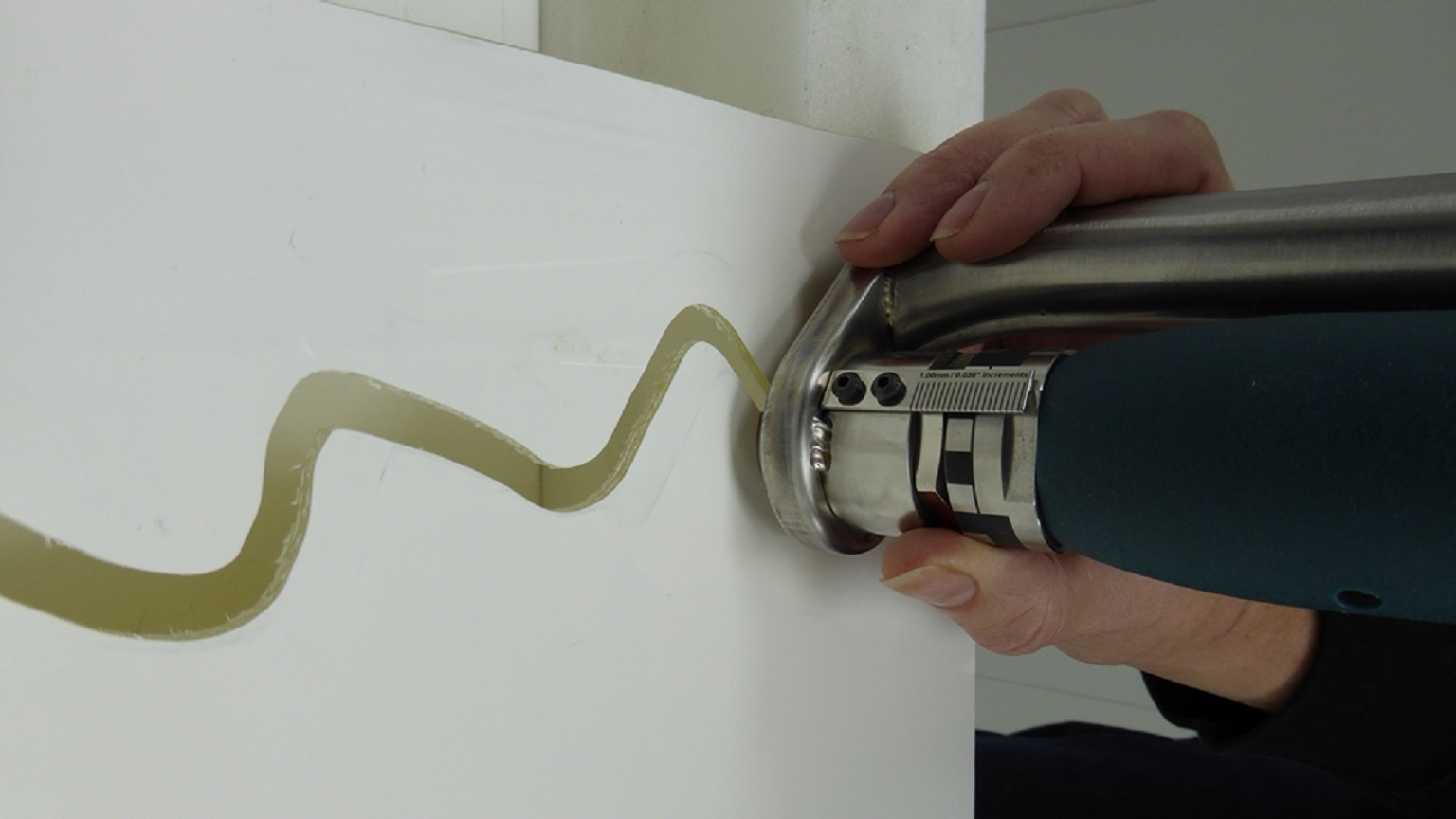
Dark Matter Composites, based in the UK, has launched a new Small Air Router Kit to help enable dust free trimming and repair of composite materials.
The kit features a lightweight Dynabrade air motor fitted with a bespoke extraction shroud which is is small enough to hold in one hand, only weighing 830g in total. The shroud has been designed for improved dust capture around the full tool head, allowing it to be used in any direction. During customer trials, the router has proven to be effective at trimming solid glass and carbon laminates as well as sandwich panels with foam and honeycomb cores, the company says.
The small routing kit is supplied with bespoke fluted diamond cutters, with two grit sizes, to remove material along the laminate leaving a clean edge. The router is suitable for trimming both intricate and large parts in open shop floor areas and on site. It is particularly suited to marine production, sandwich panel fabrications, construction sites and aerospace parts that do not fit into a trim room.
Production work
During trials, the tool was also used with a standard carbide cutter, to mill aerospace grade aluminium blocks embedded within sandwich panels. The material was removed dry, without the use of cooling fluid, with all the aluminum shavings captured at the cutting head. This makes the router suitable for production and rectification work.
The base of the extraction shroud has been designed as a jig follower, providing a 10mm offset from the cutters edge, making routing activities quick and accurate. Depth adjustment is also provided with a scale in 1 mm, 0.25mm and 0.05 mm increments, cutting panels up to 15 mm thick. The base is threaded to allow fitment of bespoke followers/guides to suit the user’s needs, if required. The tool is provided with full vacuum and airline swivel connections.
This story is reprinted from material from Dark Matter Composites, with editorial changes made by Materials Today. The views expressed in this article do not necessarily represent those of Elsevier.





